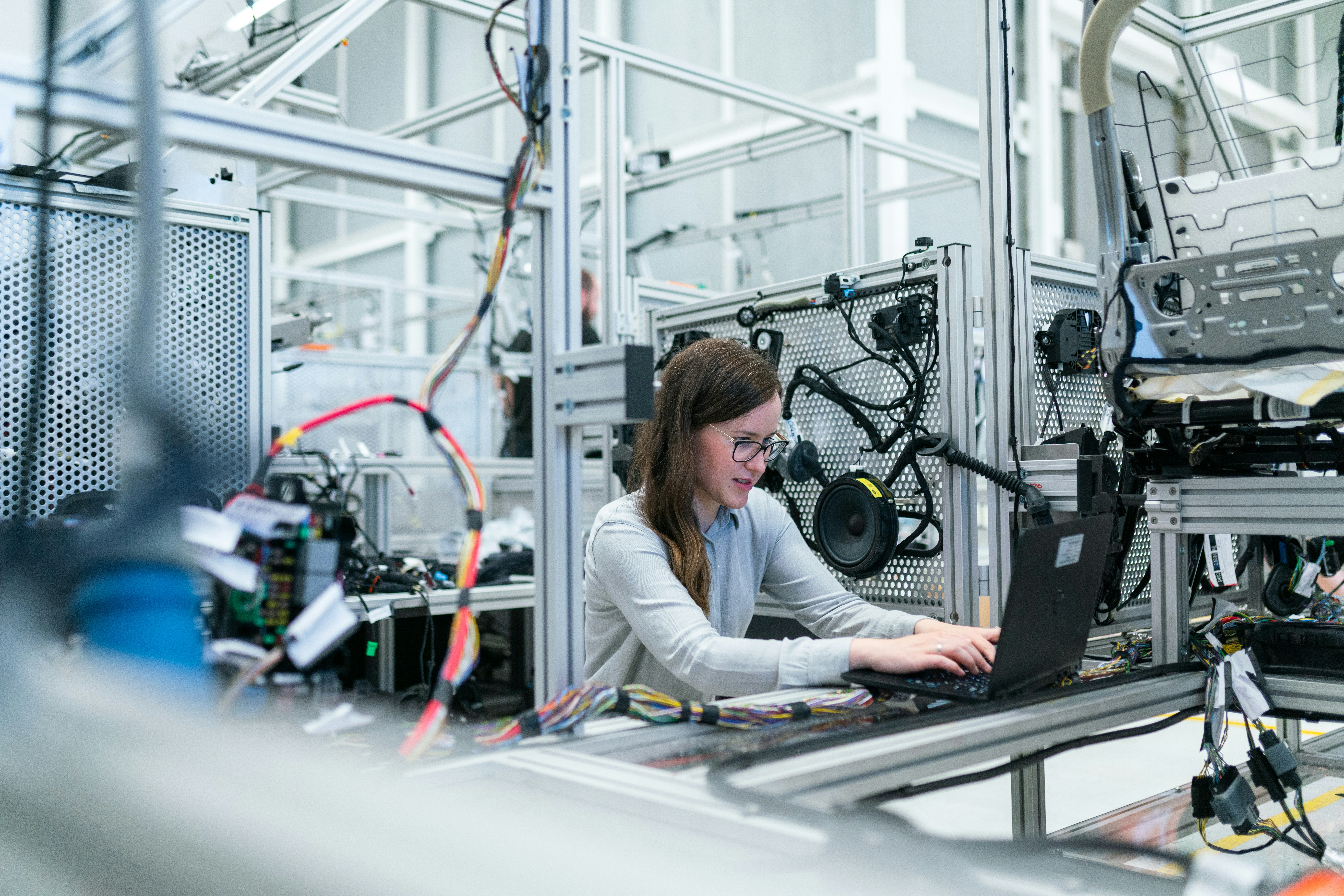
In this article, we’ll explore the incredible potential of smart AI in virtual collaboration. From virtual assistant chatbots to advanced communication tools, technology continues to revolutionize the way we work together remotely. With the power of AI, virtual collaboration goes beyond mere convenience – it becomes an intelligent and seamless experience. Discover how this innovative technology can enhance productivity, foster creativity, and revolutionize teamwork, all while creating a more connected and efficient virtual work environment. So, grab a cup of coffee and join us as we uncover the fascinating world of smart AI in virtual collaboration.
Introduction to Smart AI for Virtual Collaboration
In today’s fast-paced and interconnected world, virtual collaboration has become an essential part of our personal and professional lives. Whether you’re working on a team project, conducting a virtual meeting, or simply communicating with colleagues remotely, the need for effective collaboration is more important than ever. That’s where smart AI comes in. Smart AI, or Artificial Intelligence, is revolutionizing the way we collaborate by enhancing communication, streamlining information sharing, and enabling efficient task management. In this article, we will explore the definition of smart AI, its importance in virtual collaboration, and the benefits it brings to the table.

Definition of smart AI
Before we delve deeper, let’s clarify what exactly smart AI is. Smart AI refers to advanced technologies that can simulate human intelligence, enabling machines to understand, learn, and respond to users’ needs. Through the use of algorithms, machine learning, and natural language processing, smart AI can perform tasks that would typically require human intervention. In the context of virtual collaboration, smart AI can understand and interpret human communication, automate processes, and provide valuable insights to improve productivity and efficiency.
Overview of virtual collaboration
Virtual collaboration involves working together remotely using digital tools and technologies. It has become increasingly prevalent in recent years, thanks to advancements in internet connectivity, cloud-based platforms, and communication tools. Whether it’s a remote team spread across different time zones or individuals working from home, virtual collaboration allows for seamless communication, information sharing, and task management. However, as virtual collaboration becomes more common, the need for smart AI to enhance and optimize these processes becomes apparent.
Importance of smart AI in virtual collaboration
Smart AI plays a crucial role in virtual collaboration by bridging the gap between physical and digital interactions. It helps overcome the limitations of remote work, such as language barriers, time zone differences, and information overload. By leveraging smart AI technology, virtual collaboration becomes more inclusive, efficient, and productive.
Benefits of using smart AI in virtual collaboration
Now that we understand the importance of smart AI in virtual collaboration, let’s explore the specific benefits it brings to the table.
Enhanced Communication with Smart AI
Effective communication is the backbone of any collaboration, and smart AI takes it to a whole new level. Here are some ways in which smart AI enhances communication in virtual collaboration:
Real-time language translation
Smart AI-powered language translation eliminates language barriers in virtual collaboration. It can instantly translate messages, documents, and even spoken words in real-time. This feature allows team members who speak different languages to communicate seamlessly, fostering better understanding and collaboration.
Natural language processing
Natural language processing enables smart AI to understand and interpret human language. It can analyze written or spoken words, extract meaning, and respond intelligently. By leveraging natural language processing, virtual collaboration platforms equipped with smart AI can provide accurate and contextually relevant responses, making communication more effective and efficient.
Voice recognition and speech-to-text conversion
Smart AI can recognize and understand human speech, converting it into written text. This capability is particularly beneficial during virtual meetings or conference calls, as it eliminates the need for manual note-taking. Participants can focus on the conversation while the smart AI transcribes the dialogue in real-time, creating a record for future reference.
Automated language correction and clarification
In virtual collaboration, miscommunication can often occur due to typos, grammar errors, or vague language. Smart AI can automatically correct language mistakes, suggest improvements, and even clarify ambiguous statements. This not only saves time but also ensures that everyone is on the same page, minimizing misunderstandings and enhancing collaboration.
Efficient Task Management with Smart AI
Managing tasks and deadlines is a critical aspect of virtual collaboration, and smart AI can simplify and optimize this process. Here’s how smart AI improves task management in virtual collaboration:
Automated task assignment and tracking
Smart AI can analyze project requirements, team members’ skills, and workload distribution to automatically assign tasks. It can also track progress, deadlines, and provide real-time updates on task completion. This feature saves time, reduces manual effort, and ensures that everyone is aware of their responsibilities.
Intelligent scheduling and time management
Virtual collaboration often involves coordinating meetings and managing multiple schedules across different time zones. Smart AI can analyze everyone’s availability, preferences, and time zones to suggest the best meeting times. It can also help optimize individual work schedules, ensuring efficient use of time and minimizing conflicts.
Smart AI reminders and notifications
Keeping track of deadlines, meetings, and important milestones can be challenging in virtual collaboration. Smart AI can send automated reminders and notifications to team members, ensuring that nothing falls through the cracks. This feature improves accountability, reduces delays, and streamlines the workflow.
Optimizing productivity and efficiency
Smart AI can analyze work patterns, identify bottlenecks, and suggest ways to improve productivity. It can provide insights on time management, collaboration strategies, and even recommend tools and techniques to enhance efficiency. By leveraging smart AI, virtual collaboration becomes streamlined, productive, and ultimately more successful.
Streamlined Information Sharing with Smart AI
Sharing and accessing information is a crucial aspect of virtual collaboration, and smart AI simplifies and streamlines this process. Here are some ways in which smart AI enhances information sharing:
Content curation and recommendation
Smart AI can analyze the vast amount of available content and curate relevant and personalized information for team members. It can recommend articles, research papers, or even training materials based on individual preferences and project requirements. This feature ensures that team members have access to the most relevant and up-to-date information, enhancing collaboration and decision-making.
Smart AI-powered knowledge bases
Knowledge bases are repositories of information that team members can access for reference and guidance. Smart AI-powered knowledge bases leverage natural language processing and intelligent search capabilities to provide quick and accurate answers to queries. This feature encourages self-service and empowers team members to find information independently, freeing up time for more critical tasks.
Real-time document collaboration
Virtual collaboration often involves working on shared documents, presentations, or spreadsheets. Smart AI enables real-time collaboration by allowing multiple team members to work on the same document simultaneously. Changes are synced instantly, and everyone can see the updates in real-time, fostering seamless collaboration and reducing version control issues.
Secure data sharing and access control
In virtual collaboration, data security and access control are paramount. Smart AI can enforce privacy settings, encryption protocols, and access controls to ensure that sensitive information is protected. It can also detect and notify users about potential security risks, such as unauthorized sharing or suspicious activities. By leveraging smart AI, virtual collaboration becomes both efficient and secure.
Enhanced Decision Making with Smart AI
Making informed decisions is essential for successful virtual collaboration, and smart AI empowers team members with valuable insights and recommendations. Here’s how smart AI enhances decision-making:
Data analysis and predictive modeling
Smart AI can analyze vast amounts of data, extract trends, and patterns, and generate actionable insights. By combining historical data with real-time inputs, smart AI can predict future outcomes and provide decision-makers with valuable information. This feature enables data-driven decision-making, facilitating more accurate and informed choices.
Smart AI-driven insights and recommendations
Smart AI can analyze project data, team performance, and market trends to provide valuable insights and recommendations. It can identify areas for improvement, suggest alternative strategies, and even predict potential challenges. By leveraging smart AI, remote teams can make more informed and optimized decisions, leading to better project outcomes.
Risk assessment and mitigation
Virtual collaboration often involves complex projects with various risks and uncertainties. Smart AI can assist in identifying and assessing potential risks, evaluating their impact, and suggesting mitigation strategies. This feature not only helps teams proactively manage risks but also enables them to make informed decisions while minimizing uncertainties.
Automated decision-making processes
In certain scenarios, smart AI can even automate decision-making processes based on predefined rules and criteria. This feature streamlines routine decision-making tasks, reduces delays, and allows virtual teams to focus on more strategic and complex decisions. By leveraging smart AI, virtual collaboration becomes more efficient and streamlined.
Smart AI for Virtual Team Building
Building and nurturing effective virtual teams is crucial for successful collaboration, and smart AI can play a significant role in this process. Here’s how smart AI enhances virtual team building:
Smart AI-powered team formation and selection
Smart AI can analyze individual profiles, skills, and project requirements to suggest the best team formation. By considering factors such as expertise, communication styles, and previous collaboration experiences, smart AI can help create diverse and high-performing virtual teams. This feature improves team dynamics, enhances collaboration, and increases the chances of successful project outcomes.
Virtual team bonding and culture building
Building a sense of camaraderie and teamwork among virtual team members can be challenging without physical interactions. Smart AI can facilitate virtual team bonding activities, such as icebreaker quizzes, virtual social events, or team challenges. This feature creates a positive and engaging virtual environment, fostering stronger relationships and a cohesive team culture.
Enhanced collaboration and cooperation
Smart AI can analyze individual work patterns, communication styles, and preferences to identify potential collaboration challenges. It can provide insights and recommendations on how to overcome communication gaps, improve cooperation, and foster a collaborative mindset. By leveraging smart AI, virtual teams can enhance their collaborative capabilities, leading to better project outcomes.
Remote employee engagement and motivation
Virtual collaboration often comes with the risk of reduced employee engagement and motivation. Smart AI can analyze individual interests, work preferences, and provide personalized recommendations to keep remote employees engaged and motivated. This feature promotes a positive work environment, reduces burnout, and improves overall team morale.
Smart AI in Virtual Meetings
Virtual meetings are at the core of virtual collaboration, and smart AI can significantly enhance their efficiency and effectiveness. Here’s how smart AI improves virtual meetings:
Smart AI for meeting scheduling and coordination
Scheduling and coordinating virtual meetings can be a complex task, especially when dealing with different time zones and availability. Smart AI can analyze participants’ schedules, preferences, and suggest the optimal meeting times. It can also automate the process of sending invitations, reminders, and coordination, saving time and reducing scheduling conflicts.
Real-time transcription and note-taking
During virtual meetings, keeping track of discussions, decisions, and action items can be challenging. Smart AI can transcribe the meeting dialogue in real-time, eliminating the need for manual note-taking. Participants can focus on the conversation while the smart AI generates a written record, ensuring that nothing is missed and facilitating future reference.
Intelligent meeting facilitation
Smart AI can play the role of an intelligent meeting facilitator, guiding the discussion, and ensuring equal participation. It can monitor individual speaking times, detect interruptions, and provide prompts to involve quieter team members. This feature creates a fair and inclusive meeting environment, fostering better collaboration and idea exchange.
Smart AI-driven meeting summaries
After the meeting, smart AI can automatically generate meeting summaries, highlighting key discussion points, decisions, and action items. This feature saves time and effort, ensuring that everyone has a clear understanding of what was discussed and agreed upon. Meeting summaries also serve as a reference point for future follow-ups and accountability.

Security and Privacy Considerations with Smart AI
While the benefits of smart AI in virtual collaboration are undeniable, it’s essential to address security and privacy concerns. Here are some considerations when using smart AI in virtual collaboration:
Data encryption and secure communication
Smart AI platforms should prioritize data encryption protocols and secure communication channels. This ensures that sensitive information remains protected and inaccessible to unauthorized individuals. By implementing robust encryption mechanisms, smart AI platforms can provide a secure environment for virtual collaboration.
Anonymization and data protection
To address privacy concerns, smart AI platforms should anonymize and protect personal data. This includes personal information, communication history, and any other data that could identify individuals. By maintaining data protection measures, smart AI platforms can uphold privacy standards and build trust among virtual collaboration users.
Ethical considerations in AI usage
Deploying smart AI in virtual collaboration requires careful consideration of ethical guidelines and principles. It is essential to ensure transparency, accountability, and fairness in AI algorithms and decision-making processes. By adhering to ethical standards, smart AI platforms can promote responsible usage and avoid potential biases or discriminatory practices.
Compliance with data regulations
Data regulations and compliance standards vary across countries and industries. Smart AI platforms should adhere to applicable regulations, such as the General Data Protection Regulation (GDPR) or the Health Insurance Portability and Accountability Act (HIPAA). By complying with data regulations, smart AI platforms can protect user data and foster trust among virtual collaboration users.
Challenges and Limitations of Smart AI in Virtual Collaboration
While smart AI offers numerous benefits for virtual collaboration, it also has its fair share of challenges and limitations. Here are some considerations to keep in mind:
Technical limitations and reliability issues
Smart AI technologies are still evolving, and they may have limitations and reliability issues. Natural language processing algorithms may not accurately understand complex queries, and voice recognition may struggle with accents or background noise. It is crucial to acknowledge these limitations and continuously improve smart AI systems to ensure reliable performance.
Potential biases and fairness concerns
Smart AI algorithms are trained on vast amounts of data, and they may inherit biases present in the training data. This can lead to unfair or biased outcomes, especially in decision-making processes. It is crucial to continuously monitor and address biases to ensure that smart AI promotes fairness and equality in virtual collaboration.
User adoption and resistance
Introducing smart AI in virtual collaboration may face resistance and reluctance from users. Some team members may be skeptical about the capabilities and intentions of smart AI technologies. It is vital to facilitate a smooth transition by providing training, support, and addressing any concerns or misconceptions. Demonstrating the value and benefits of smart AI can help overcome user adoption challenges.
Human-AI balance and integration
Finding the right balance between human collaboration and smart AI automation is essential. Over-reliance on smart AI can lead to reduced human interaction and creativity. It is crucial to strike a balance where smart AI enhances collaboration and efficiency without replacing the human element. By integrating smart AI as a supportive tool, virtual collaboration can benefit from both human expertise and AI capabilities.

Future Trends and Developments in Smart AI for Virtual Collaboration
As smart AI evolves and new technologies emerge, the future holds promising developments for virtual collaboration. Here are some trends and advancements to look out for:
Advancements in natural language processing
Natural language processing algorithms will continue to improve, enabling smart AI to understand human language with unprecedented accuracy. Smart AI will be able to handle complex queries, idiomatic expressions, and even detect nuances in communication. This will further enhance the effectiveness of virtual collaboration and enable more natural interactions.
Integration of smart AI with virtual reality
The integration of smart AI with virtual reality (VR) technology will revolutionize virtual collaboration. Imagine collaborating with colleagues in a virtual environment where smart AI avatars can simulate realistic interactions, gestures, and even facial expressions. This integration will create immersive and engaging virtual collaboration experiences, making remote work feel more like being physically present.
Smart AI-powered virtual assistants
Virtual assistants powered by smart AI will become an integral part of virtual collaboration platforms. These assistants will provide personalized support to individual users, offering recommendations, optimizing workflows, and facilitating seamless collaboration. By leveraging conversational interfaces, smart AI-powered virtual assistants will act as intelligent and reliable teammates in virtual collaboration.
AI-driven personalized virtual collaboration experiences
Smart AI will enable virtual collaboration platforms to deliver personalized experiences tailored to individual users. By analyzing user preferences, work patterns, and communication styles, smart AI can customize collaboration features, recommend relevant content, and optimize workflows. This personalization will not only improve user satisfaction but also enhance productivity and efficiency in virtual collaboration.
In conclusion, smart AI is revolutionizing virtual collaboration by enhancing communication, simplifying task management, streamlining information sharing, empowering decision-making, and fostering virtual team building. By leveraging the benefits of smart AI, virtual collaboration becomes more inclusive, efficient, and productive. While challenges and limitations exist, continuous improvement, ethical considerations, and careful integration of smart AI can ensure its successful implementation in virtual collaboration. As technology advances and new developments emerge, the future of smart AI in virtual collaboration holds immense potential for creating seamless and engaging virtual work environments.
